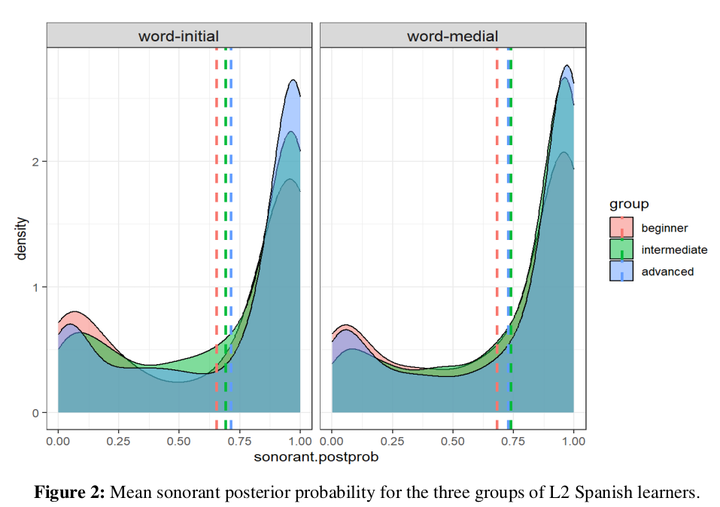
Abstract
This study investigates the gradient phonetic variations in the lenition of Spanish voiced and voiceless stops among second language (L2) learners with different levels of proficiency (beginning, intermediate, and advanced). The degree of lenition is measured using posterior probabilities of the continuant and sonorant phonological features, estimated by the deep learning model Phonet. The findings reveal that the degree of lenition, as indicated by the sonorant posterior probability, increases with proficiency. However, no significant effects of proficiency were observed for the continuant posterior probability. Similar to native speakers of Spanish, L2 learners exhibit effects of stress, voicing, and place of articulation on lenition. These results suggest that all learners exhibit lenition of stops as a fricative, but more advanced learners also exhibit lenition as a sonorant. Additionally, lenition in L2 is found to be gradient and influenced by linguistic factors. Moreover, the posterior probabilities of the continuant and sonorant phonological features, estimated by the Phonet model, serve as reliable measures of lenition. Overall, this study reveals the role of proficiency and linguistic factors in shaping the degree of lenition and highlights the effectiveness of the posterior probabilities obtained from the Phonet model in quantifying lenition.